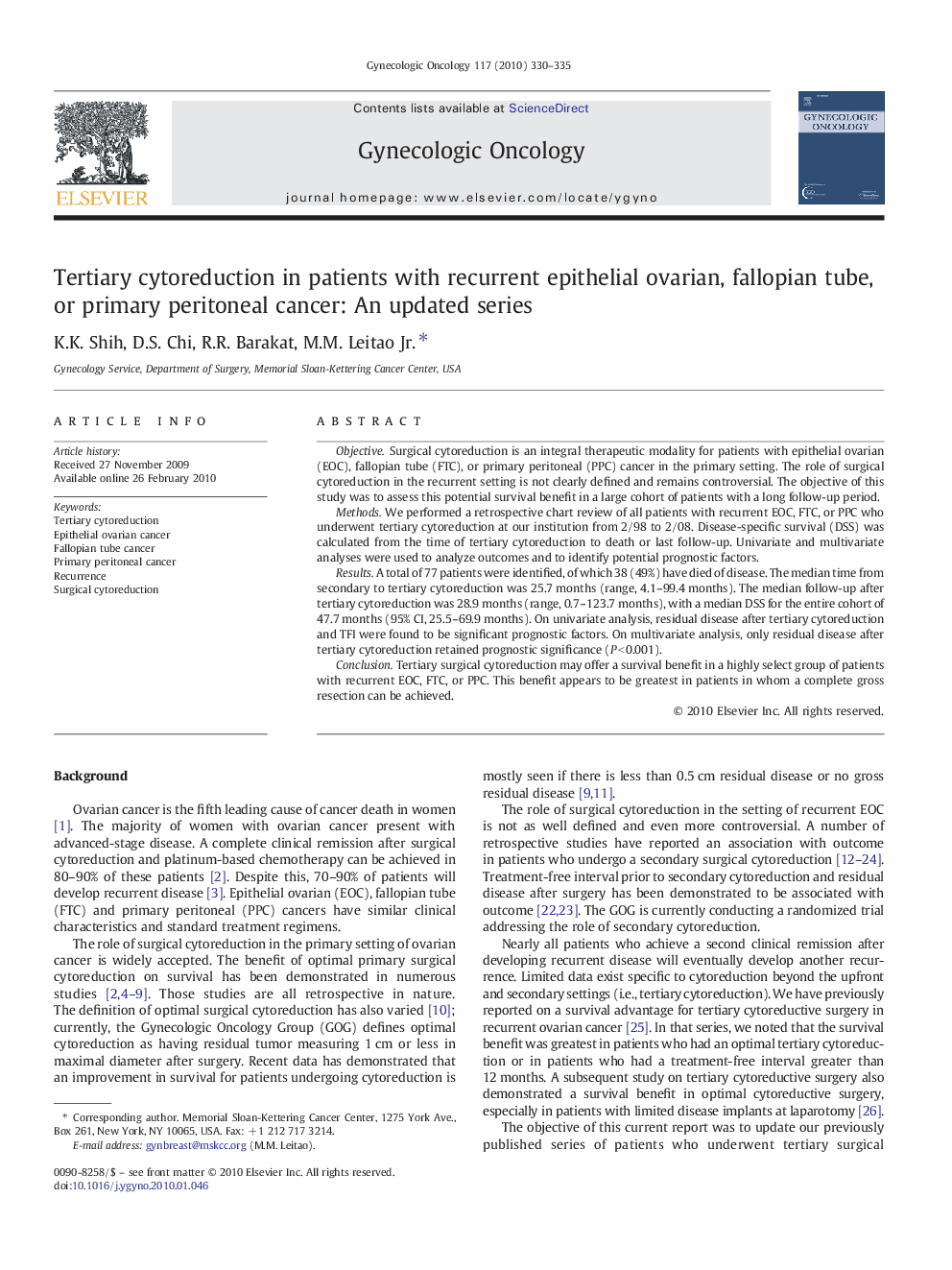| Article ID | Journal | Published Year | Pages | File Type |
|---|---|---|---|---|
| 3947387 | Gynecologic Oncology | 2010 | 6 Pages |
ObjectiveSurgical cytoreduction is an integral therapeutic modality for patients with epithelial ovarian (EOC), fallopian tube (FTC), or primary peritoneal (PPC) cancer in the primary setting. The role of surgical cytoreduction in the recurrent setting is not clearly defined and remains controversial. The objective of this study was to assess this potential survival benefit in a large cohort of patients with a long follow-up period.MethodsWe performed a retrospective chart review of all patients with recurrent EOC, FTC, or PPC who underwent tertiary cytoreduction at our institution from 2/98 to 2/08. Disease-specific survival (DSS) was calculated from the time of tertiary cytoreduction to death or last follow-up. Univariate and multivariate analyses were used to analyze outcomes and to identify potential prognostic factors.ResultsA total of 77 patients were identified, of which 38 (49%) have died of disease. The median time from secondary to tertiary cytoreduction was 25.7 months (range, 4.1–99.4 months). The median follow-up after tertiary cytoreduction was 28.9 months (range, 0.7–123.7 months), with a median DSS for the entire cohort of 47.7 months (95% CI, 25.5–69.9 months). On univariate analysis, residual disease after tertiary cytoreduction and TFI were found to be significant prognostic factors. On multivariate analysis, only residual disease after tertiary cytoreduction retained prognostic significance (P < 0.001).ConclusionTertiary surgical cytoreduction may offer a survival benefit in a highly select group of patients with recurrent EOC, FTC, or PPC. This benefit appears to be greatest in patients in whom a complete gross resection can be achieved.
